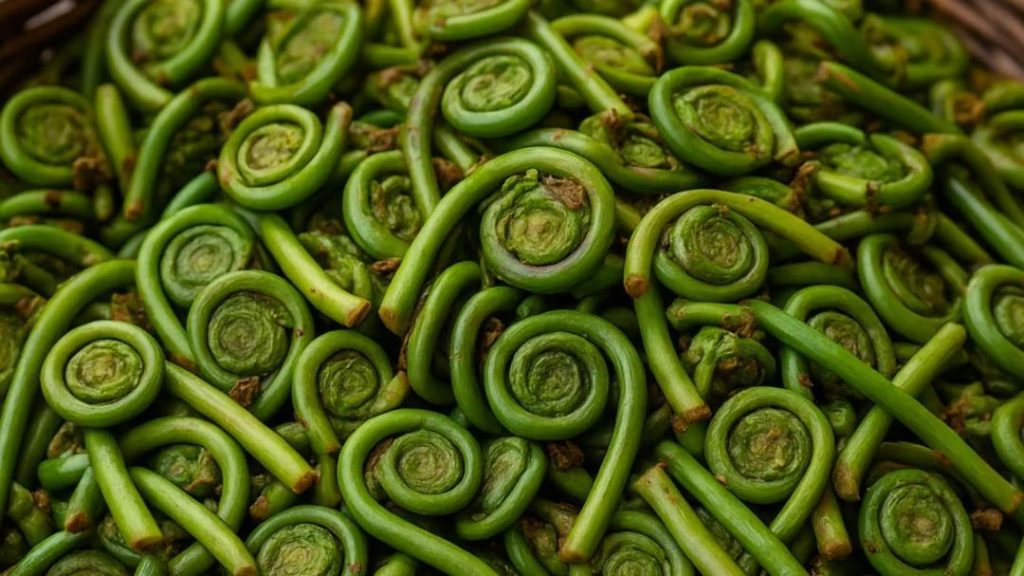
Lingad, a Monsoon Fern, Boosts Immunity and Bone Health
The Himalayas, known for their breathtaking landscapes and diverse flora, are home to a wide variety of edible plants, including the lingad, a monsoon fern that has been a staple in local cuisine for centuries. Also known as fiddlehead fern, lingad (Diplazium esculentum) is a young, coiled shoot that is harvested during the monsoon season when it is tender and curled. The locals call it Lengdu, Dhekia, or Nigro, and it is a highly sought-after ingredient in many traditional dishes.
Lingad is not only a delicacy but also a treasure trove of nutrients, boasting a range of health benefits that make it a valuable addition to a healthy diet. In this blog post, we will explore the unique flavor, rich tradition, and health benefits of lingad, as well as its harvesting and cooking methods.
What is Lingad?
Lingad is a type of fiddlehead fern that grows in the Himalayas, particularly in the states of Sikkim, Darjeeling, and West Bengal. The plant grows in clusters, and the young, curled shoots are harvested during the monsoon season, which is the best time to collect them. The ferns are usually harvested by hand, as any damage to the plant can reduce its nutritional value and make it unfit for consumption.
Nutritional Value
Lingad is an excellent source of nutrients, including protein, fiber, vitamins, and minerals. It is rich in antioxidants, which help protect the body against free radicals and oxidative stress. The fern is also a good source of calcium, iron, and potassium, making it an excellent addition to a healthy diet.
Health Benefits
Lingad has been used in traditional medicine for centuries to treat various ailments, including respiratory problems, digestive issues, and skin conditions. The fern has anti-inflammatory and antibacterial properties, which help to reduce inflammation and prevent infections.
One of the most significant health benefits of lingad is its ability to boost immunity. The fern is rich in antioxidants and other nutrients that help to support the immune system, reducing the risk of illnesses and infections.
Lingad is also known to support bone health, making it an excellent addition to a healthy diet for individuals of all ages. The fern is rich in calcium and other minerals that help to promote bone growth and density, reducing the risk of osteoporosis and other bone-related disorders.
Culinary Uses
Lingad is a versatile ingredient that can be used in a variety of dishes, including stir-fries, soups, salads, and curries. The fern has a unique flavor and texture that is often described as a combination of asparagus and spinach. It can be cooked in a variety of ways, including steaming, sautéing, and boiling.
One of the most popular ways to cook lingad is to sauté it with garlic, ginger, and chili peppers. This adds a spicy kick to the dish, which is often served with rice or roti. Lingad can also be added to soups and stews, where it adds a unique flavor and texture to the dish.
Harvesting and Cooking Methods
Lingad is typically harvested during the monsoon season, when the ferns are young and curled. The ferns are usually harvested by hand, as any damage to the plant can reduce its nutritional value and make it unfit for consumption.
Once harvested, the lingad is washed and cleaned to remove any dirt or debris. It is then cooked using a variety of methods, including steaming, sautéing, and boiling. The fern can be cooked in its entirety, or it can be chopped and added to other dishes.
Conclusion
Lingad, a monsoon fern, is a nutrient-dense ingredient that has been a staple in local cuisine for centuries. The fern is rich in antioxidants, calcium, and other minerals that help to support immune function and bone health. It is a versatile ingredient that can be used in a variety of dishes, including stir-fries, soups, salads, and curries.
If you are looking to add a new ingredient to your diet, lingad is definitely worth considering. Not only does it have a unique flavor and texture, but it is also packed with nutrients that can help to support overall health and wellness.
References:






